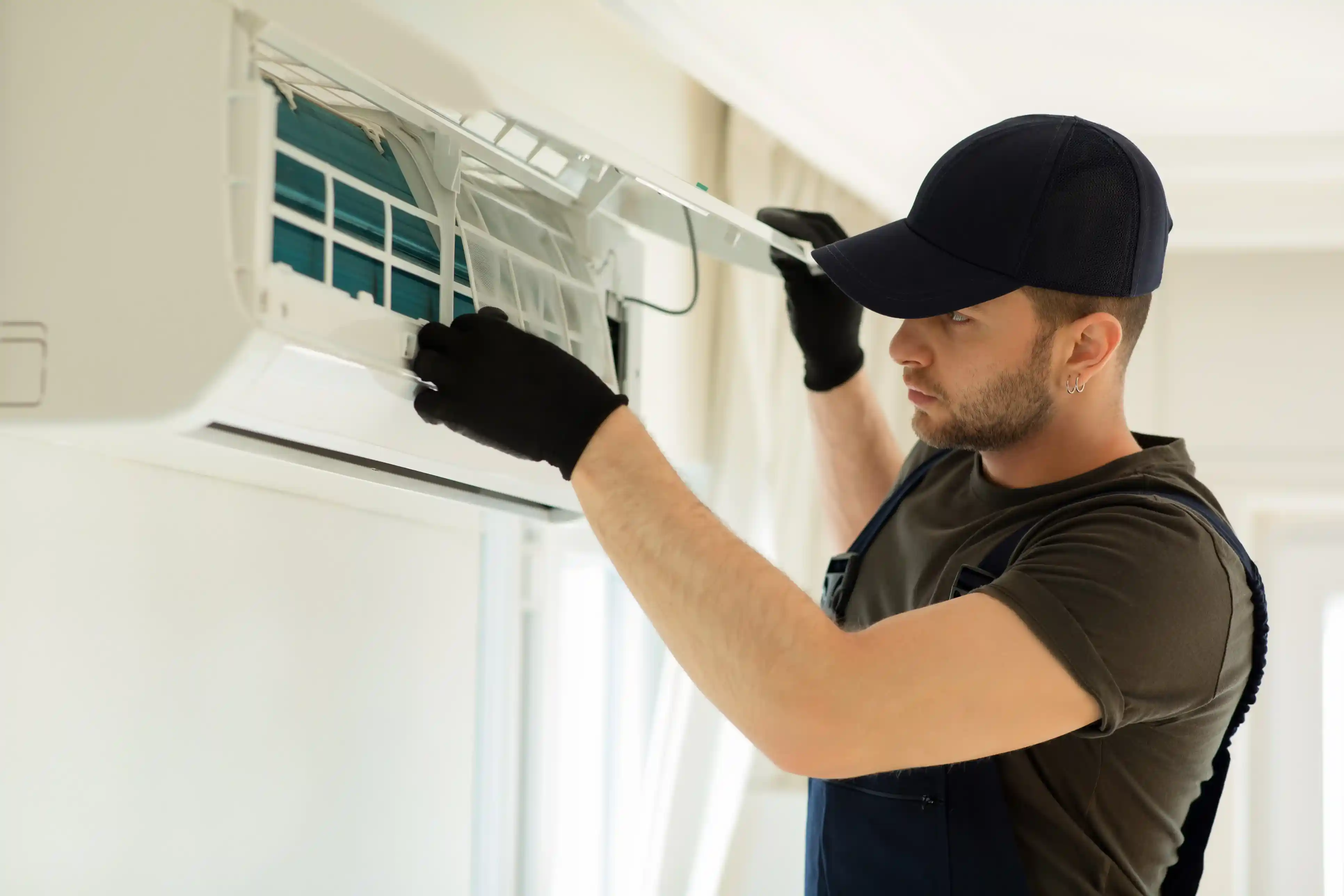
HVAC Replacement in San Luis Obispo, CA
When your home's heating and cooling system reaches the end of its lifespan or begins to experience frequent issues, considering an HVAC replacement becomes an important decision for maintaining comfort and efficiency in your San Luis Obispo property. Replacing an aging or failing system is a significant investment, but it can yield substantial long-term benefits, improving indoor air quality, lowering energy costs, and providing reliable climate control year-round.
Understanding the signs that indicate your system is nearing the point of replacement is the first step. While HVAC repair can address many problems, there comes a time when repair costs outweigh the benefits, and a full system upgrade is the more practical choice. This transition is something many homeowners in the Central Coast region face, and navigating it requires informed decisions about the right time, the right system, and the right professional.
Recognizing the Signs Your HVAC System Needs Replacement
Identifying the signals that your heating and cooling system is failing can help you plan ahead and avoid unexpected breakdowns, especially during peak seasons. Here are key indicators that suggest your HVAC system may need to be replaced rather than repaired:
- System Age: Most traditional HVAC systems, including furnaces and air conditioning units, have a lifespan of 10 to 15 years. Heat pumps might last closer to 15–20 years. If your system is within or past this age range, it's more likely to experience issues and become less efficient.
- Frequent Breakdowns: If your system requires multiple HVAC repair calls each year, the cumulative cost of repairs can quickly add up. Repeated failures are a strong sign that internal components are wearing out and the system is nearing the end of its functional life.
- Increasing Energy Bills: An aging or struggling system has to work harder to maintain desired temperatures, consuming more energy in the process. A noticeable increase in your monthly utility bills, unexplained by rate changes or usage habits, can indicate declining efficiency.
- Inconsistent Temperatures: Uneven heating or cooling throughout your home suggests your system is no longer capable of distributing air effectively or maintaining a consistent temperature across different zones. This can be due to aging equipment or issues with the ductwork.
- Unusual Noises or Odors: Strange sounds like grinding, squealing, banging, or persistent unusual odors coming from your vents or the unit itself can point to internal problems that may be complex or costly to repair.
- System Cycling: If your system turns on and off frequently (short-cycling), it's working harder than it should. This increases wear and tear on components, reduces comfort, and wastes energy.
- Excessive Dust or Poor Air Quality: While proper indoor air quality solutions and duct cleaning help, an old system might struggle to filter air effectively, leading to increased dust buildup or concerns about airborne pollutants.
Considering these signs can help you determine if your current system is nearing the point where replacement offers a better return on investment than continued repairs.

Repair or Replace? Making the Right Choice
Deciding whether to repair a failing HVAC unit or invest in a complete HVAC replacement is a common dilemma. While repairing offers a lower upfront cost, it's essential to consider the long-term implications, especially for homeowners in San Luis Obispo where comfort is key throughout the varied seasons.
A frequently cited guideline is the "$5,000 Rule" (or $5 age repair cost). While not a strict rule, it suggests that if the cost of a repair multiplied by the age of the system exceeds $5,000, replacement is often the more economical choice. However, this should be considered alongside other factors like the frequency of past repairs, the system's efficiency, and your plans for the home.
If your system is relatively new and the repair is minor, a HVAC repair is likely the best course. But for older systems with costly issues, recurring problems, or significantly low efficiency ratings, investing in a new, modern system typically provides greater value over time through reduced energy bills, increased reliability, and improved comfort. A professional assessment can provide clarity on the condition of your current system and offer recommendations based on its performance, age, and your specific needs.
Benefits of Upgrading to a Modern HVAC System
Replacing your old HVAC system with a new, high-efficiency model offers a wide range of advantages that significantly improve your home environment and reduce operating costs.
- Enhanced Energy Efficiency: Modern HVAC systems are designed to be far more energy-efficient than older models. Measured by SEER (Seasonal Energy Efficiency Ratio) for cooling and AFUE (Annual Fuel Utilization Efficiency) for heating, new systems can offer substantial improvements, leading to lower monthly utility bills and a smaller environmental footprint.
- Improved Comfort and Performance: New systems provide more consistent heating and cooling, eliminating hot and cold spots and maintaining your desired temperature more accurately. Features like variable-speed blowers or multi-stage heating/cooling offer more precise control and quieter operation.
- Increased Reliability: A new system comes with the peace of mind of a manufacturer's warranty and the expectation of years of dependable service with proper HVAC maintenance. You'll experience fewer breakdowns and the associated hassle and cost of emergency repairs.
- Better Indoor Air Quality: Many new systems are designed with improved filtration capabilities. When combined with other indoor air quality products, a new system can help reduce allergens, dust, and pollutants circulating in your home, leading to a healthier living environment.
- Increased Home Value: A new, energy-efficient HVAC system is an attractive feature for prospective buyers and can increase your home's market value.
The HVAC Replacement Process
Undertaking an HVAC replacement involves several key steps to ensure the new system is properly sized, installed, and functions optimally for your home in San Luis Obispo.
- Home Assessment and Consultation: The process typically begins with a qualified professional assessing your home's specific heating and cooling needs. This involves evaluating the size of your home, insulation levels, window types and placement, and other factors using calculations like Manual J to determine the correct system capacity. They will discuss your comfort preferences, budget, and recommend suitable system types (like traditional Air Conditioning and Heating systems, Mini Split ductless systems, or heat pumps) and efficiency ratings.
- System Selection: Based on the assessment and consultation, you'll select the new HVAC system that best meets your needs and budget. This involves choosing a brand, system type, and efficiency level.
- Scheduling the Installation: Once the system is chosen, the installation is scheduled at a convenient time.
- Removal of Old Equipment: On the installation day, the existing HVAC system components, including the outdoor unit, indoor unit (furnace, air handler), and potentially some ductwork or refrigerant lines, are carefully and safely removed.
- Installation of the New System: The new system is then professionally installed. This includes setting the new outdoor and indoor units, connecting refrigerant lines and electrical wiring, and integrating it with your existing or new ductwork. A new thermostat is also typically installed and configured.
- System Testing and Calibration: After installation, the technician thoroughly tests the new system to ensure it is operating correctly, is properly charged, and meets all manufacturer specifications. They calibrate the thermostat and check airflow.
- Cleanup and Final Walkthrough: The work area is cleaned, and the technician provides a walkthrough, explaining how to operate your new system, its features, and essential HVAC maintenance requirements.
Throughout this process, attention to detail and adherence to best practices ensure the longevity and performance of your new HVAC system. Homeowners in San Luis Obispo can also expect that necessary local permits for HVAC work will be obtained and managed as part of the professional service.
Choosing the Right Partner for Your Replacement
Selecting an experienced and reliable HVAC contractor is paramount for a successful HVAC replacement project. Look for professionals with a strong understanding of local climate needs, proper sizing techniques (like Manual J), and a commitment to quality installation. Ensuring the contractor is licensed and insured provides protection and peace of mind. A professional will guide you through system options suitable for San Luis Obispo homes, discuss energy efficiency, and explain the installation process clearly.
When your aging system is showing signs of decline, exploring HVAC replacement is a proactive step toward guaranteed comfort and potentially significant savings on energy expenses in your San Luis Obispo home.
Contact our experienced team today to schedule a consultation and find the right HVAC replacement solution tailored for your San Luis Obispo home.



Featured Manufacturers
We proudly install and service top-performing systems from Trane and Mitsubishi industry leaders known for reliability, innovation, and energy efficiency. When you choose Straight Line, you're getting premium products backed by expert installation and support.








